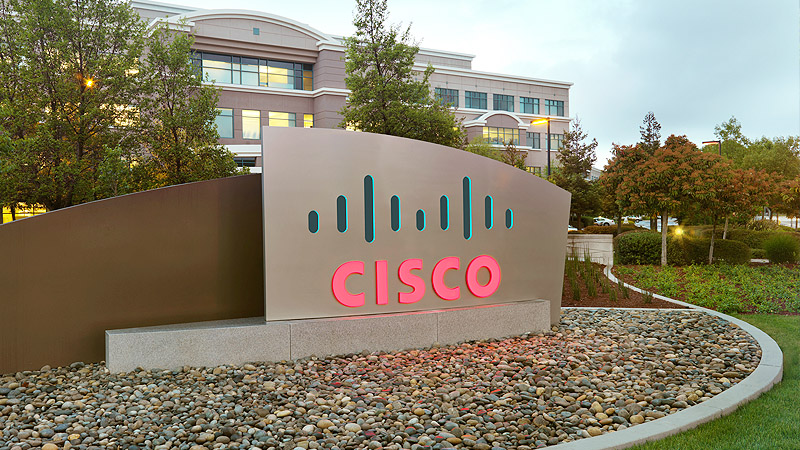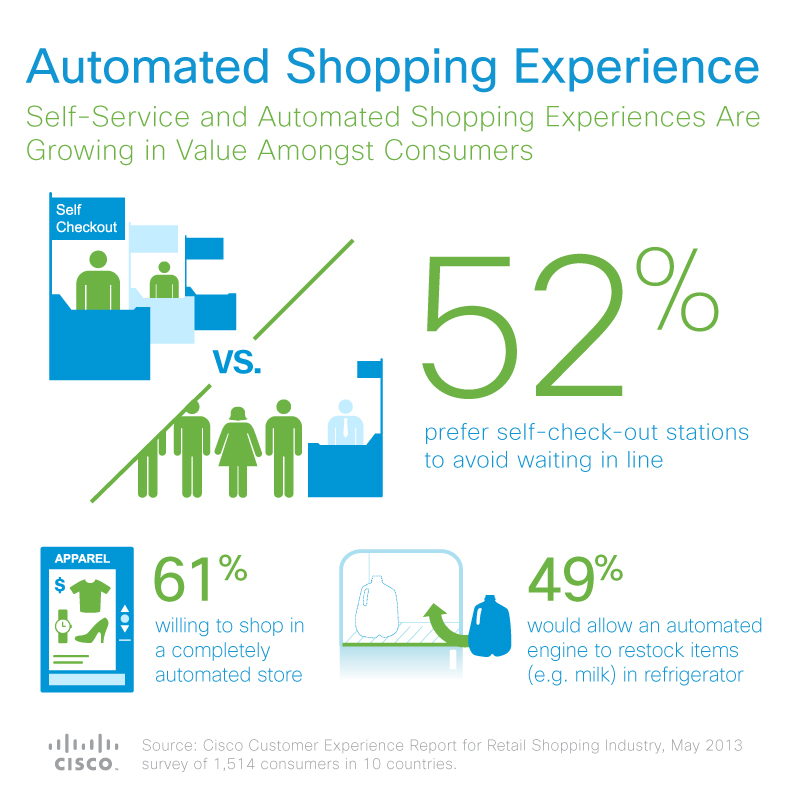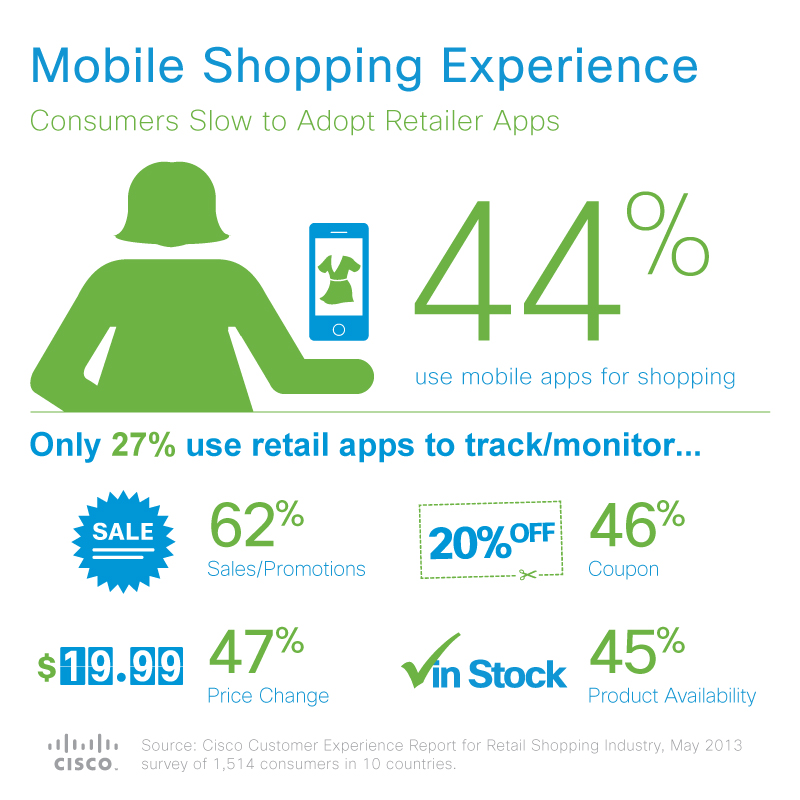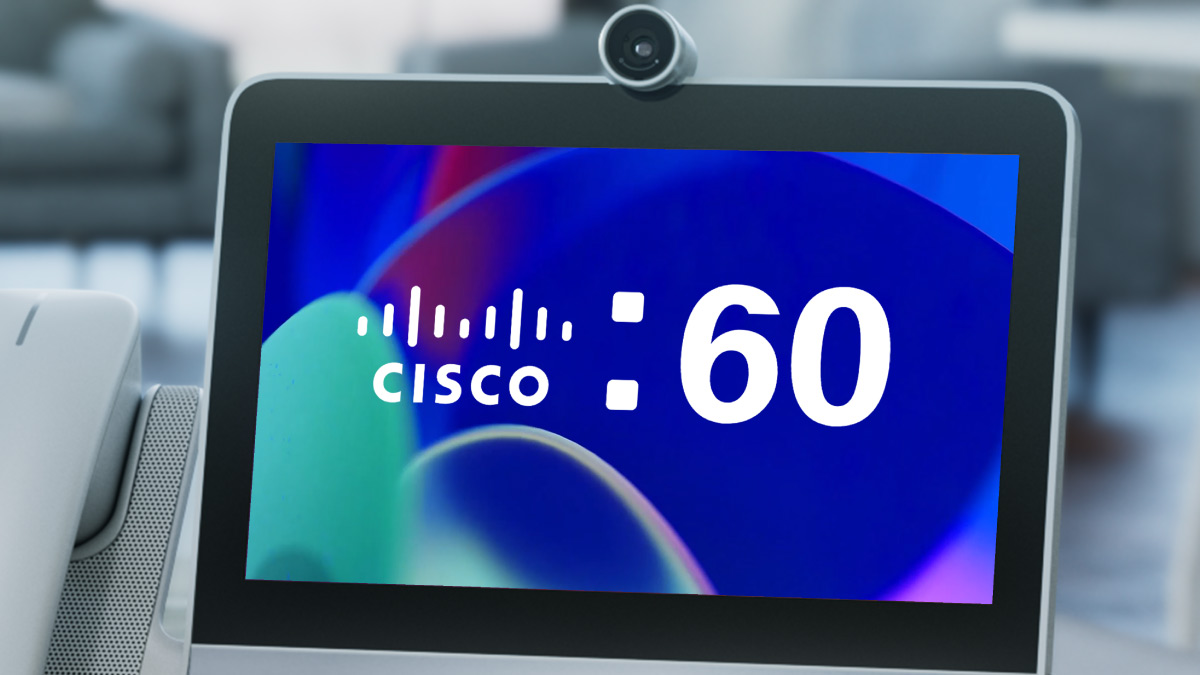SAN JOSE, Calif. – June 5, 2013 – Cisco today announced the results of the Cisco® Customer Experience Report, focused on the retail shopping experience. The global report examined the impact of automation, self-service and omni-channel shopping experiences and consumers' views about providing their personal information in exchange for more personalized services.
The majority (61 percent) of global consumers are open to shopping at a fully automated "self service" store with vending machines and kiosk stations offering a virtual customer service. Additionally, when "checking out," the majority of consumers globally (52 percent) prefer self-check-out stations in order to avoid waiting in line to make purchases. The younger consumers were the most accepting of this shopping experience: 57 percent of Generation Y (aged 18-29) and 55 percent of Generation X shoppers (aged 30 to 49) prefer self-check-out, while baby boomers (50+) represent only 45 percent.
Overall, the report demonstrates consumer interest in more automated and personalized shopping experiences, the type of connections made possible by what Cisco describes as the Internet of Everything (IoE). The Internet of Everything brings together people, process, data and things to make networked connections more relevant and valuable than ever before. Cisco recently released an Internet of Everything economic analysis that identified a $14.4 trillion in bottom-line business value that will be created over the next decade by the Internet of Everything innovations.
Highlights and Key Facts
The Cisco Customer Experience Report surveyed 1,511 consumers across 10 countries to examine the perceptions of consumers on their desired retail shopping experience.
Omni-channel shopping experience grows
- One-third (34 percent) of global consumers use multiple channels when shopping. The survey shows 23 percent of consumers recently made in-store purchases based on research they did online, and 11 percent of shoppers purchased online after seeing it in a retail store.
Convenience of self-service and automated buying experience growing in value among consumers
- Avoiding lines: The majority of consumers globally (52 percent) prefer self-check-out stations in order to avoid waiting in line to make a purchase.
- Price check/product availability: When researching products in the store, 43 percent prefer using their own mobile phone, while 57 percent of consumers prefer using in-store touch screens.
- Rise of the digital mall: The majority (61 percent) of global consumers would be willing to shop in a completely automated store with vending machines with products and kiosk stations offering virtual customer service. And 42 percent of consumers would prefer to shop in these kinds of environments.
- Automated milkman: Almost half (49 percent) of consumers would allow an automated engine to make purchases for replacement products automatically. This could include restocking milk in the refrigerator.
- Budget tracking: Half of global consumers (52 percent) would likely purchase a device to help them stay on budget for clothing and other retail purchases.
- Automated shopping tips: Two-thirds (65 percent) of global consumers are comfortable receiving retail advice based on their location through their mobile device.
In-person assistance valued when shopping
- Desire for more personal customer service: Although many shoppers want automation when purchasing, consumers are evenly divided, with 58 percent of consumers preferring help from an in-store associate. And when shopping online, slightly more consumers prefer to instant-message with a sales associate (30 percent), or call one on the phone (28 percent) than send an email (27 percent).
Mobile shopping experience: Consumers slow to adopt retailer apps
- Half of consumers use mobile phone when shopping: Majority 54 percent of consumers use mobile phones when shopping in a store, yet only 27 percent of consumers said they use retail mobile applications.
- Retail mobile apps usage: More than a quarter (27 percent) of customers use retail applications. They use apps for checking prices (56 percent), finding sales/discounts/coupons (53 percent), scanning barcodes (48 percent), reviewing consumer product reviews (45 percent).
- Valued monitoring services: Consumers want to track sales and promotions (62 percent), coupons (46 percent), price changes (47 percent), and product availability (45 percent).
Consumers are willing to trust retailers with personal information in exchange for more personal customer service
- Getting personal online: Almost half (49 percent) of consumers are comfortable with retailers collecting personal information when shopping online in exchange for more personalized recommendations and customer service.
- Can I get you another size? More than half (58 percent) of consumers are willing to share their personal measurements and sizes with their retailer in exchange for more personalized recommendations on future purchases.
- Gold card privileges: Many consumers (39 percent) would reveal their personal income in exchange for more personalized service, discounts and sale promotions.
- Since you purchased that, you may like this: More than half (54 percent) of consumers globally said they are OK with retailers storing their purchase history in exchange for more personalized service.
- Sharing personal data with manufacturers: More than a third (35 percent) of consumers are OK (25 percent) or don't care (10 percent) if retailers share personal information about them to vendors in exchange for more personalized services, with 46 percent of consumers stating they are selective on which retailer websites they provide personal information.
Buyer beware: What consumers don't trust about retailers
- Trust retailer to secure personal info: Only 43 percent of consumers feel their data is protected by clothing retailers overall (both in store and online). And only 32 percent of consumers trust retailers to store their credit card information in exchange for faster checkout. However, 60 percent of consumers trust certain retailer websites to keep information about them secure.
- Consumer reviews preferred to retail sales pitch: When shopping for clothing online, 83 percent of consumers rely on product reviews from other shoppers (53 percent) or friends on social media (30 percent) in purchasing decisions, while only 23 percent rely on recommendations made from retailer employees via online chat.
- Role of social media in reporting customer service: When a retailer is resolving a customer service issue reported via social media, the vast majority of consumers (94 percent) would expect a personal response, with most (68 percent) expecting an personal email and 46 percent expect a phone call.
For more information about the Cisco research in retail, please visit Cisco Customer Experience website.
Supporting Quotes
Jon Stine, Retail Services Practice, Cisco Internet Business Solutions Group (IBSG)
"The data in the Cisco Customer Experience Report shows a growing consumer desire for an omni-channel shopping experience, where the speed and personalization they receive online is delivered in an increasing self-service manner in the store."
Supporting Resources
- Cisco Customer Experience website
- Other Research on Retail can be found on Cisco IBSG Retail Practice Website
- Social Media: Follow Cisco on Facebook, Twitter and LinkedIn
Technorati Tags: Cisco, Internet Business Solutions Group (IBSG), Retail, Video, Mobile, New Business Models, Shopping, Research, Study, Omnichannel, Internet of Everything
About Cisco Systems
Cisco (NASDAQ: CSCO) is the worldwide leader in IT that helps companies seize the opportunities of tomorrow by proving that amazing things can happen when you connect the previously unconnected. For ongoing news, please go to http://thenetwork.cisco.com.
# # #
Cisco and the Cisco logo are trademarks or registered trademarks of Cisco and/or its affiliates in the U.S. and other countries. A listing of Cisco's trademarks can be found at www.cisco.com/go/trademarks. Third-party trademarks mentioned are the property of their respective owners. The use of the word partner does not imply a partnership relationship between Cisco and any other company.








